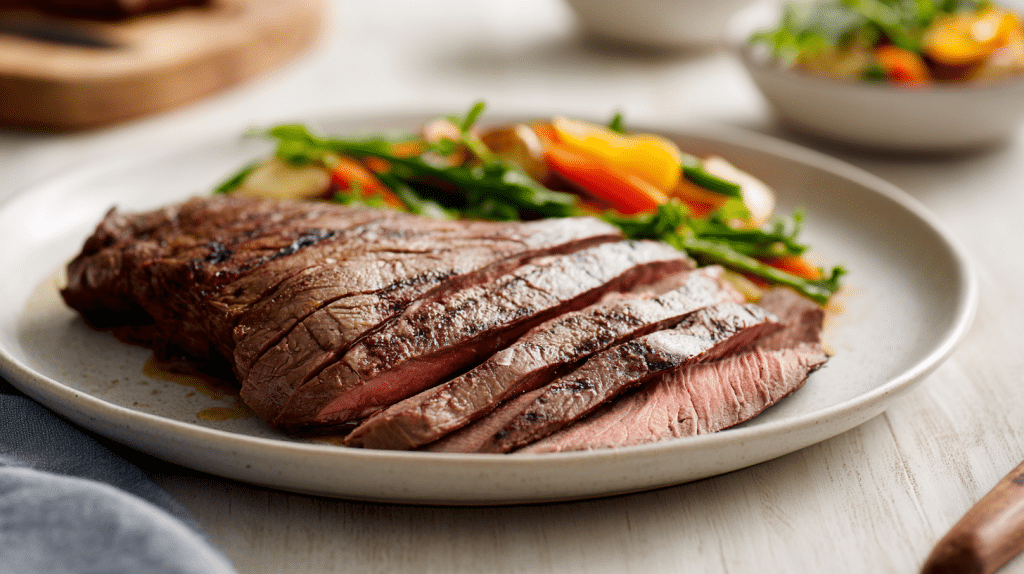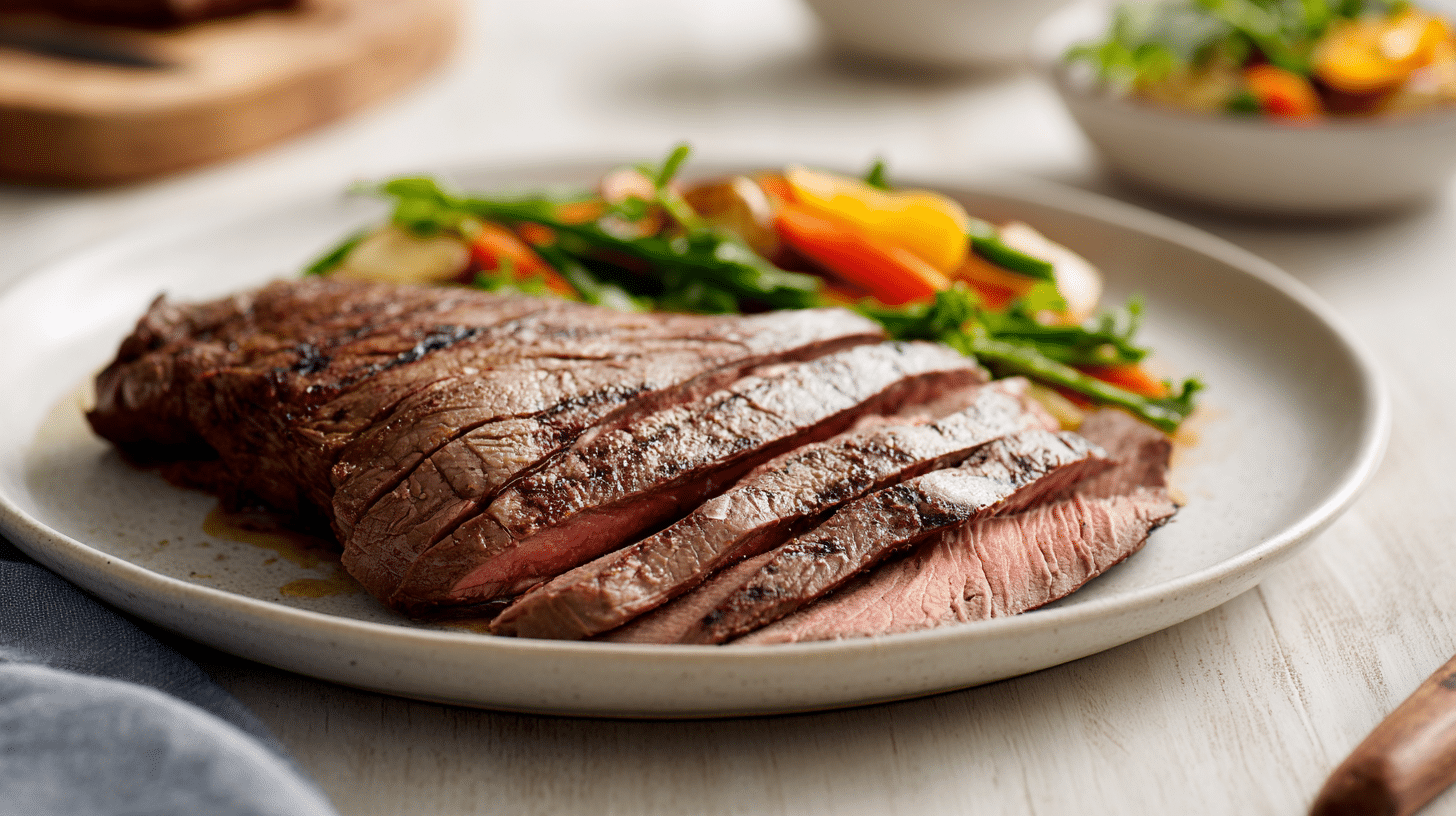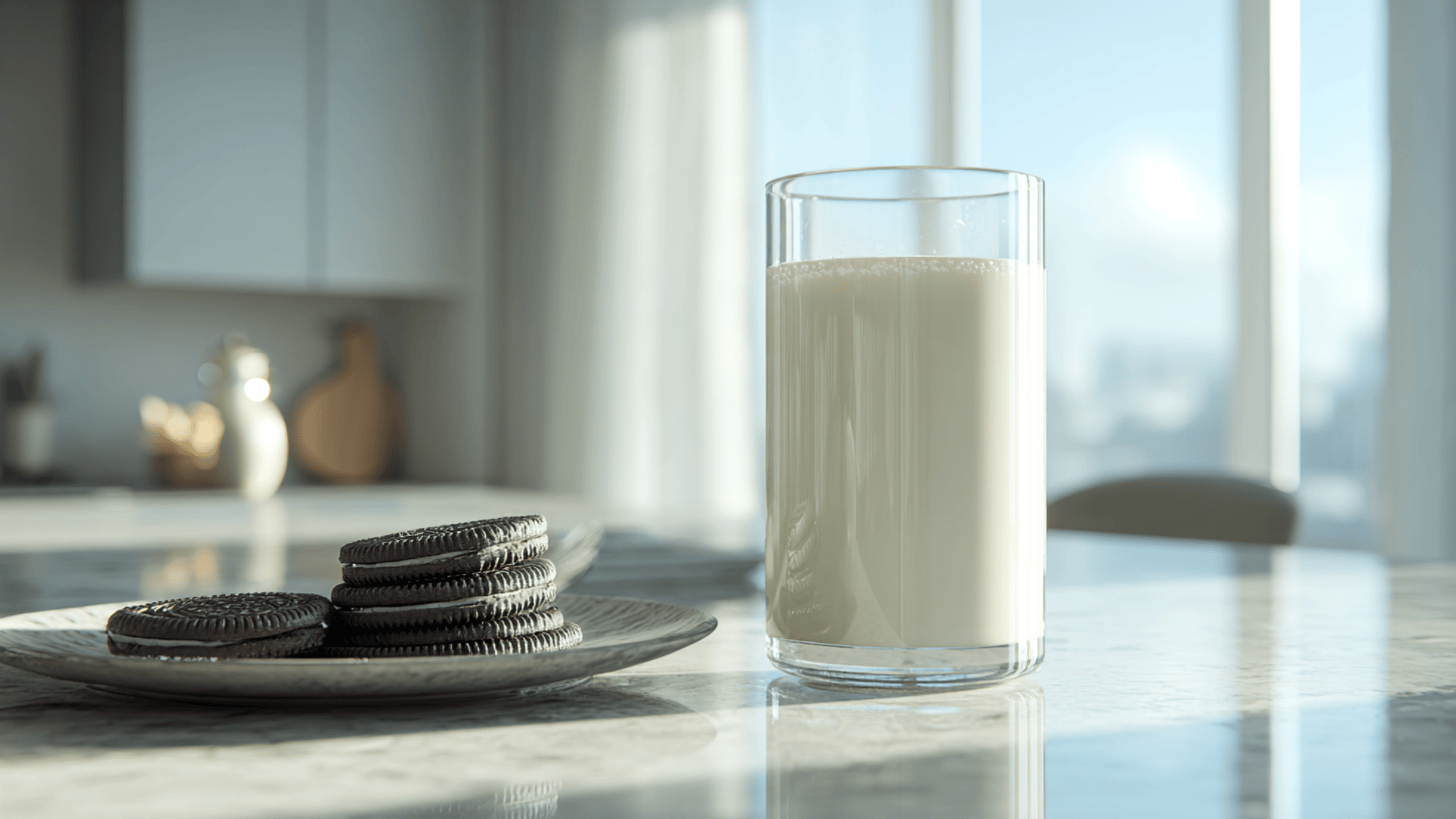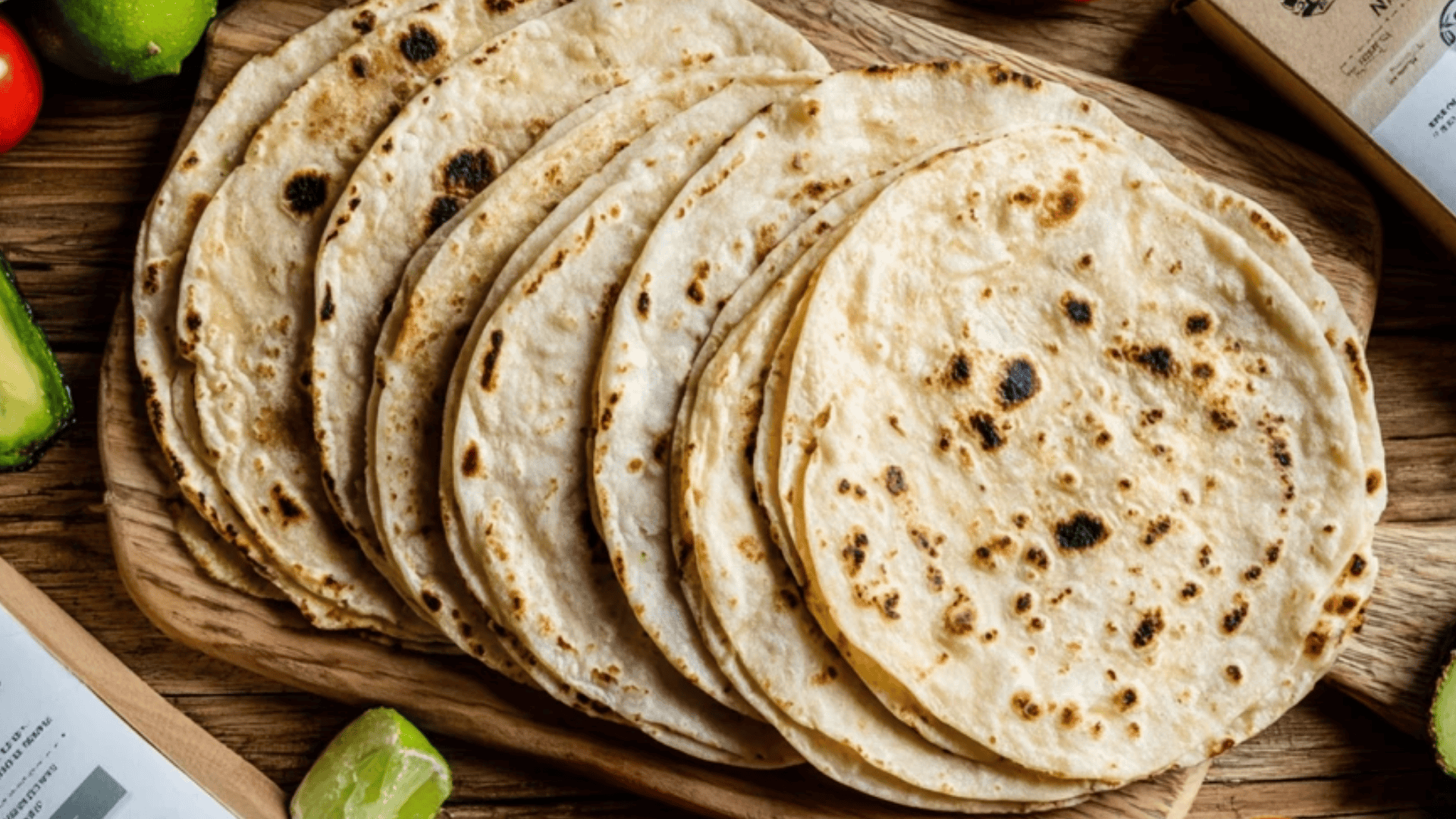Flank steak is one of the leanest, most flavorful cuts of beef you can enjoy.
Known for its long, thin shape and deep, beefy taste, this popular cut is a favorite for quick weeknight meals, grilling, and high-protein diets.
Even better, it’s packed with nutrients that help fuel a strong, healthy body. It’s an excellent source of protein, iron, and B vitamins, all of which support energy, muscle health, and overall wellness.
Many people love flank steak not just for its bold flavor, but also for its nutritional benefits, especially if they’re trying to eat healthier or keep track of calories.
What Is Flank Steak and Why Is It Unique?
Flank steak comes from the abdominal area of the cow, specifically the flank primal, which sits just below the loin. This location gives the cut its signature long, flat shape and visible grain.
It’s naturally lean, making it a popular choice for people who want a flavorful cut of beef with low fat content.
Unlike more tender cuts, flank steak has a strong, satisfying flavor. Its coarse grain allows it to absorb flavors quickly, so even a short marinade can make a big difference.
Although it’s a lean cut, flank steak becomes tender and juicy when cooked properly, usually over high heat, and then sliced thinly against the grain. This slicing technique shortens the long muscle fibers and gives you that perfect bite every time.
Nutritional Value of Flank Steak

Flank steak offers a variety of health benefits thanks to its lean profile, high protein content, and rich supply of essential vitamins and minerals.
1. High in Protein
Flank steak offers 27–28 g of high-quality protein per 100 g cooked, which helps rebuild muscle fibers after workouts.
This makes it an ideal choice for athletes, active individuals, or anyone trying to increase their daily protein intake for better strength and recovery.
Protein is essential for repairing tissues, supporting muscle growth, and maintaining overall body function.
2. Lower Fat Content
It offers the hearty flavor of beef without the higher calorie load of marbled cuts because flank steak is considered a leaner option.
This makes it appealing for people who want to enjoy red meat more often while still keeping their daily fat intake in check.
Lower fat content means fewer calories, making flank steak helpful for weight management.
3. Zero Carbohydrates
Because flank steak contains no carbs, it’s an easy choice for people following keto, paleo, or low-carb lifestyles. It supports balanced blood sugar levels and reduces energy spikes.
With no carbs, since it doesn’t contribute to glucose fluctuations, it’s a strong choice for people watching their insulin response or seeking longer-lasting satisfaction after meals.
Quick Nutritional Value Table
| Nutrient | Amount |
|---|---|
| Calories | 220 kcal |
| Protein | 28 g |
| Total Fat | 9 g |
| Saturated Fat | 3 g |
| Carbohydrates | 0 g |
| Iron | 2 mg |
| Zinc | 5 mg |
| Vitamin B12 | 2.0 µg (60–80% DV) |
| Selenium | 30 µg (50% DV) |
| Potassium | 350 mg |
Disclaimer: Nutritional values can vary depending on the cut’s exact fat content and the cooking method (grilling, broiling, pan-searing). Adding oil, sauces, or marinades will change the calorie and fat totals.
Health Benefits of Flank Steak
There are several health benefits of including Flank Steak in your diet, some of the are as follows:
- Great for muscle health: Packed with lean protein that helps repair and build strong muscles.
- Good for heart health: When eaten in moderation, its lean protein and selenium can support overall heart health.
- Good for red blood cell support: High in iron and vitamin B12, which help prevent tiredness and support healthy blood.
- Boosts energy levels: B vitamins help your body convert food into energy more efficiently.
- Supports a strong immune system: Contains zinc and selenium, which help your body fight off infections.
- Good for brain health: Vitamin B12 supports memory, focus, and healthy nerve function.
- Helps maintain a healthy metabolism: Protein and B vitamins work together to keep metabolism steady.
- Supports oxygen flow in the body: Iron helps carry oxygen throughout your body, keeping you alert and active.
- Good for bone health: Protein and minerals, such as phosphorus, support strong, healthy bones.
Flank Steak vs Other Cuts: A Nutrition Comparison
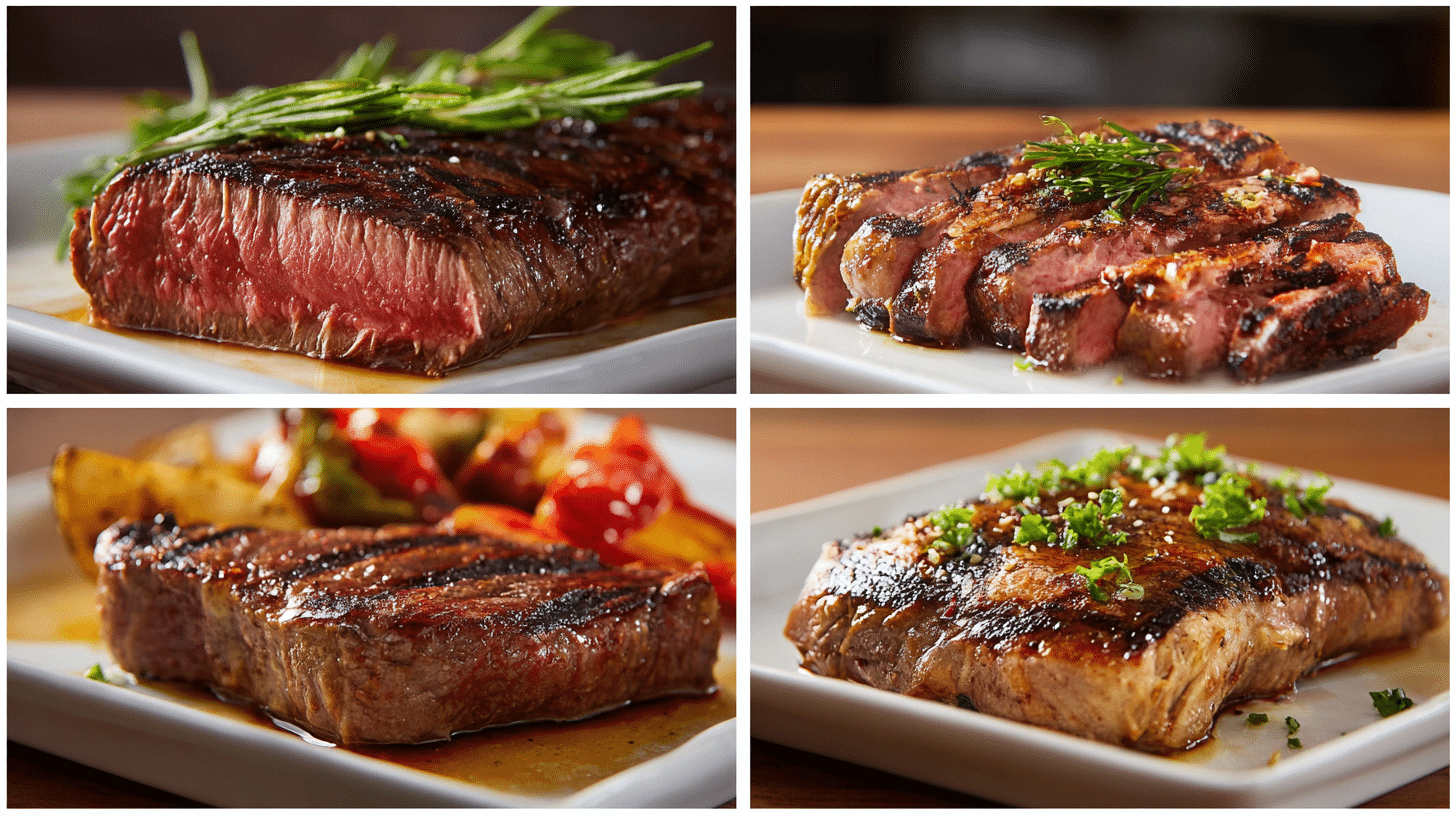
While all the steaks are nutritious, flank steak stands out for offering a leaner profile with fewer calories and less saturated fat, making it a smarter choice for balanced eating and weight-conscious diets.
| Qualities | Flank Steak | Ribeye Steak | Skirt Steak | Sirloin Steak |
|---|---|---|---|---|
| Fat Content | Lean; low total & saturated fat | Very high fat; heavily marbled | Moderately high fat | Lean to moderately lean |
| Calories | Moderate | Highest among the four | Slightly higher than the flank | Similar to flank; moderate |
| Protein | High | High, but slightly lower per gram due to fat | High | High |
| Flavor | Deep, beefy flavor | Rich, buttery, intense | Strong, bold flavor | Mild to moderately beefy |
| Health Profile | Lean, nutrient-dense | Higher calories & saturated fat | Slightly higher fat; still nutritious | Balanced, lean, and healthy |
How to Include Flank Steak in Your Diet
Adding Flank steak to your meals is easy and rewarding. It fits well into breakfasts, lunches, and dinners.
1. Grilled Flank Steak Slices
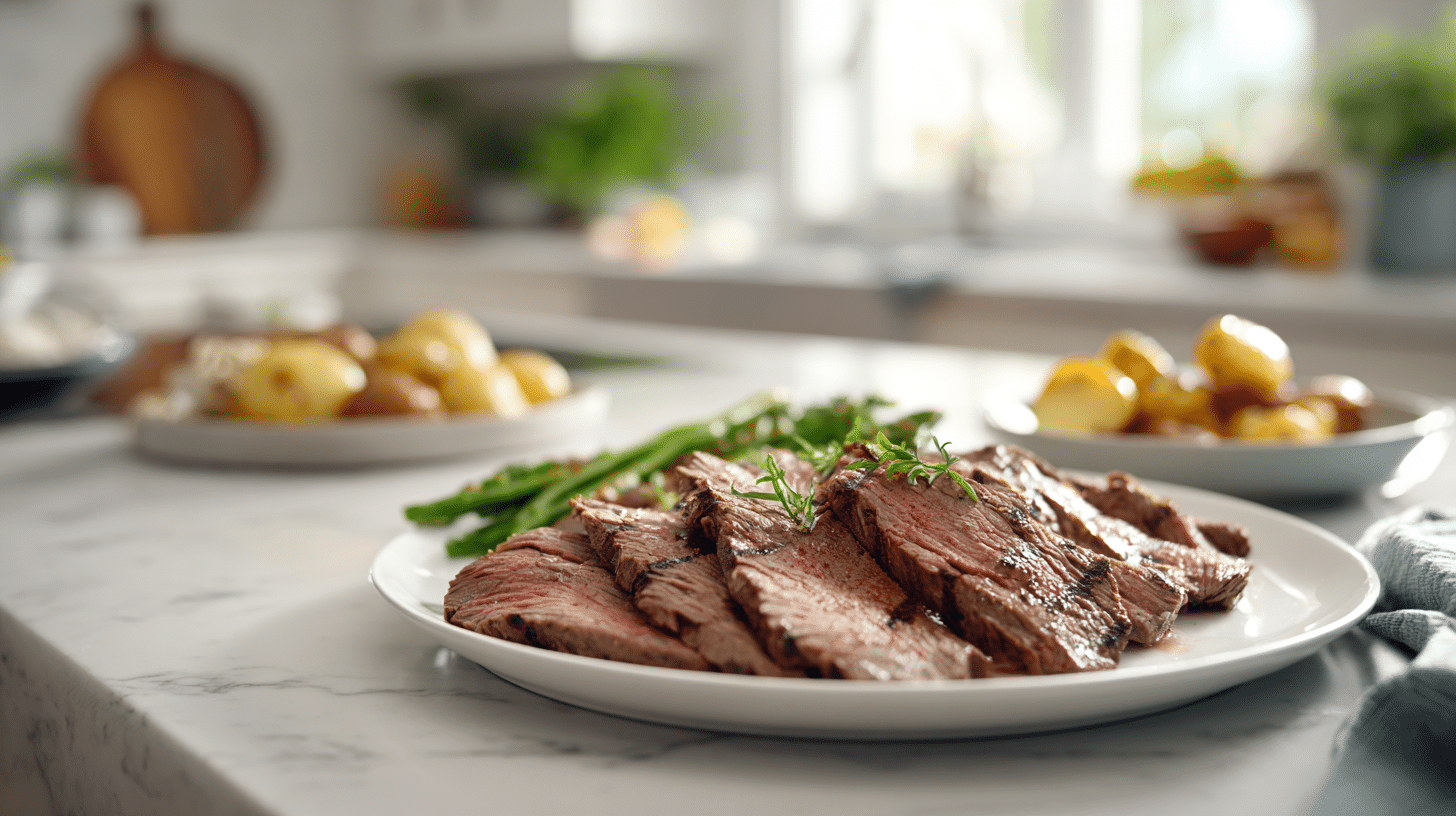
Grilled flank steak is an easy, lean option that pairs well with vegetables, salads, or roasted potatoes. Slicing it thinly against the grain keeps it tender and flavorful.
This simple method doesn’t require extra oil or sauces, which helps control calories. A 3-oz serving typically has 160–180 calories, making it great for balanced meals.
2. Flank Steak Stir-Fry
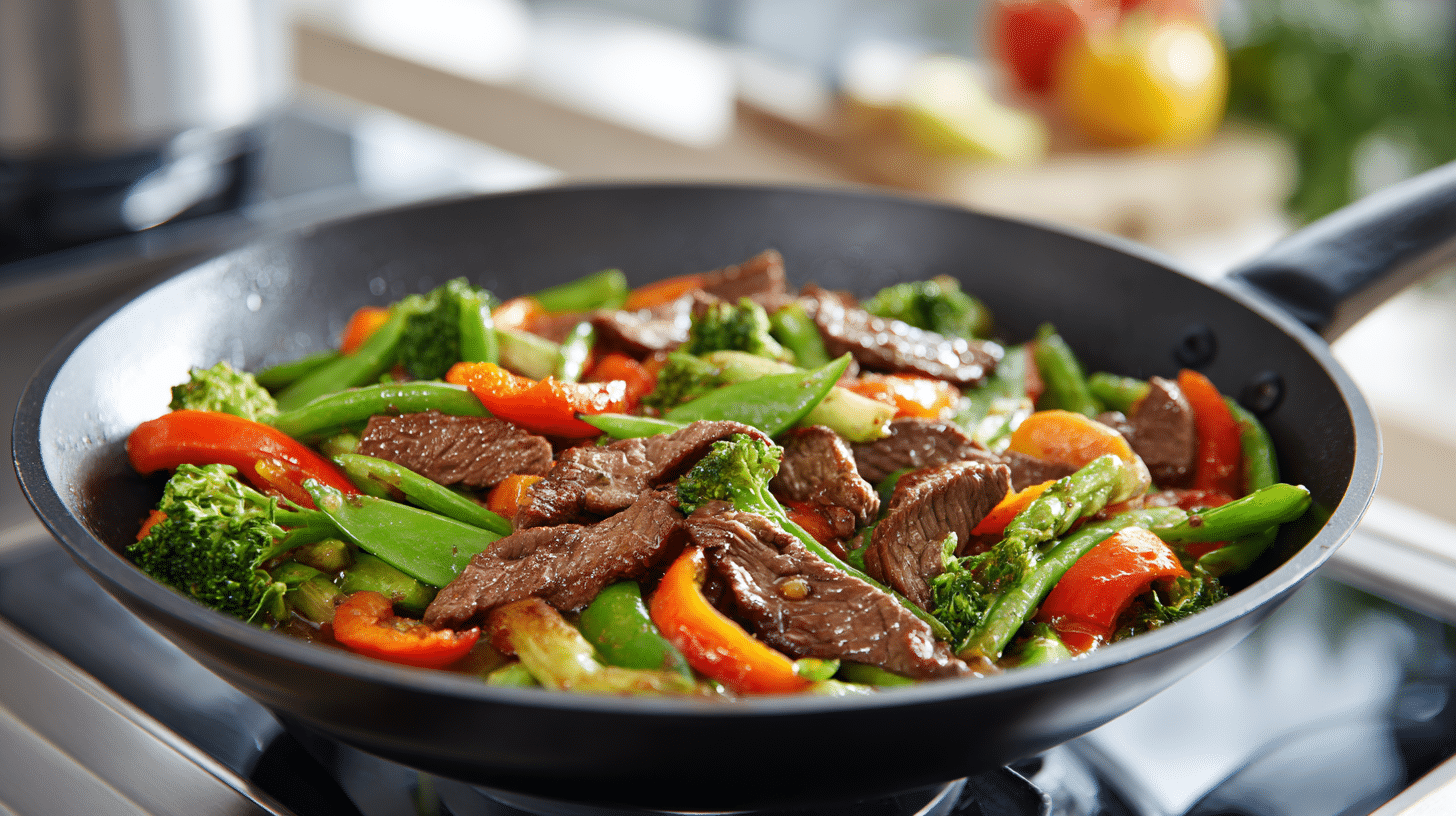
Using thin strips of flank steak in a stir-fry adds great flavor without a heavy calorie load. Cook it quickly with colorful vegetables for a high-protein, nutrient-packed meal.
Just be mindful of oil and sauces, since they can increase calories fast. A typical serving comes in at 250–300 calories, depending on what you add.
3. Flank Steak Salad Bowl
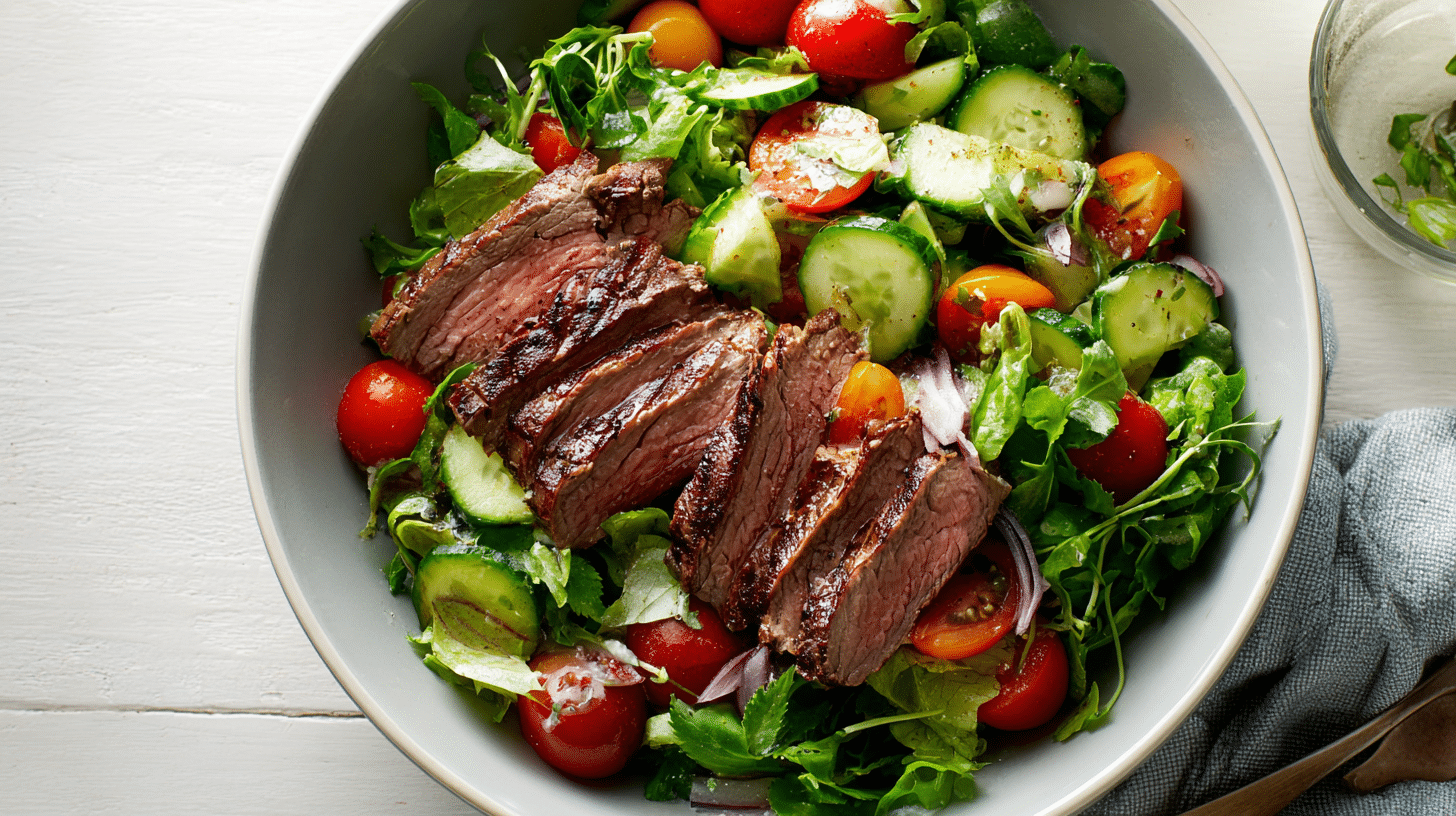
Adding flank steak to a salad creates a filling, protein-rich meal that’s still light and refreshing. Pair it with greens, tomatoes, cucumbers, and a light vinaigrette for balance.
The protein keeps you full longer, making it perfect for lunches. A full bowl usually ranges from 350 to 400 calories, depending on the dressing.
Possible Drawbacks to Consider
Flank steak is highly nutritious, but there are a few points to keep in mind for balanced and safe consumption.
- Typically Higher in Sodium: Store-bought marinated flank steak can contain added sodium, which increases overall salt intake.
- Less Tender Than Other Cuts: Compared to ribeye or tenderloin, flank steak has a firmer texture. People who prefer very tender cuts may not enjoy its more structured bite.
- Can Become Tough if Overcooked: Flank steak is naturally lean, so cooking it too long can make the meat dry and chewy.
Final Thoughts
Flank steak is a lean, nutrient-dense cut that delivers an impressive amount of high-quality protein, iron, B vitamins, and essential minerals, all while staying lower in fat and calories than many other steaks.
Its bold, beefy flavor and versatility make it easy to enjoy in everything from salads to grain bowls, stir-fries, and tacos.
Overall, flank steak is more than just a lean cut of beef; it’s a wholesome, satisfying, and nutrient-rich choice that can fit beautifully into balanced, everyday eating.
If focusing on protein, managing calories, or simply enjoying great flavor, flank steak is a smart and wonderful addition to your diet.


